Abstract
The seasonal variation in temperature characteristics of photosynthetic and heterotrophic activities in the microbial plankton of Bedford Basin, Nova Scotia, was investigated. Measurements were made of the photosynthetic uptake of [14C]bicarbonate and its incorporation into cellular protein as well as the heterotrophic uptake of 3H-labeled amino acids and their incorporation into cellular protein. Activity-temperature curves were analyzed objectively by nonlinear estimation of parameters from various mathematical models. Over the seasonal cycle, the cardinal temperatures and a parameter formally equivalent to the thermodynamic enthalpy of activation for most of the four processes measured were positively correlated with the water temperature. The temperature sensitivity of metabolic activity (i.e., change in activity per unit change in temperature) was indexed by the tangent to the activity-temperature curves. When this index was expressed in dimensionless form by normalization to the scaling factor of the activity-temperature curves, the resulting relative temperature sensitivity, evaluated at the prevailing temperature, proved to be statistically invariant throughout the year. During the height of the spring bloom, the water temperature (−0.3°C) was not so low as to inhibit metabolic activity of either the phytoplankton or the bacterioplankton. The evidence suggests that heterotrophic utilization of products is not suppressed during the spring phytoplankton bloom.
Full text
PDF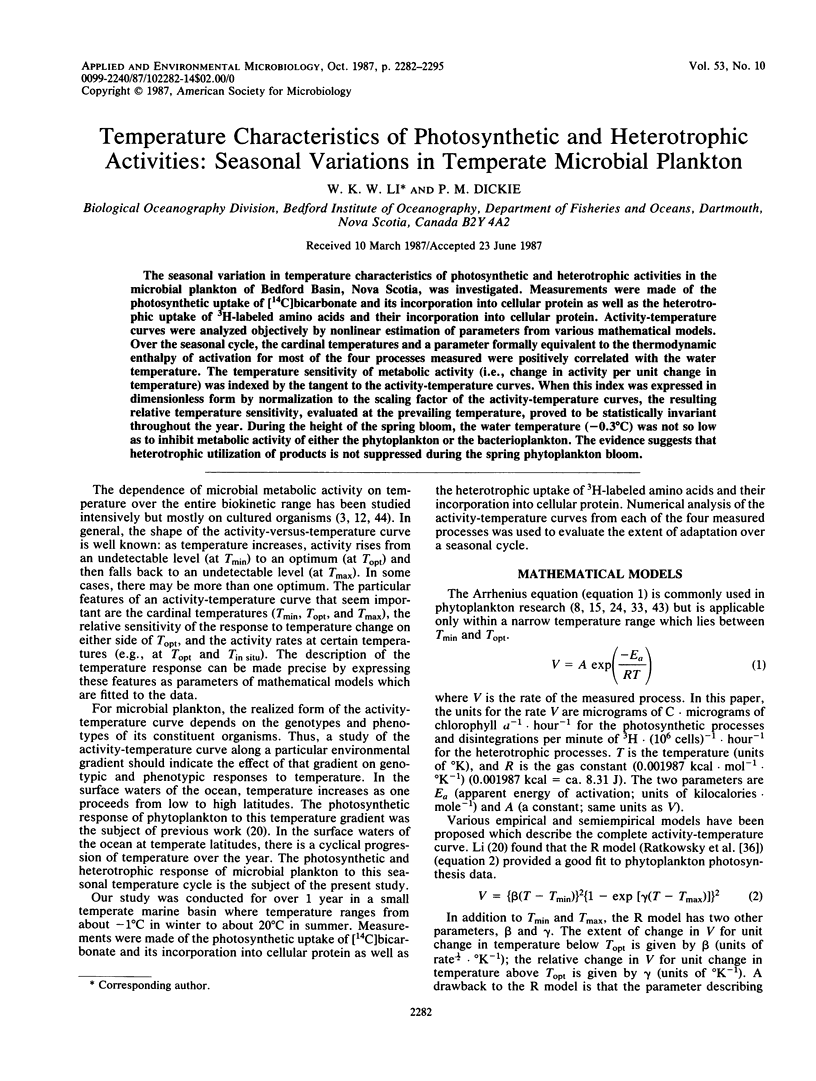
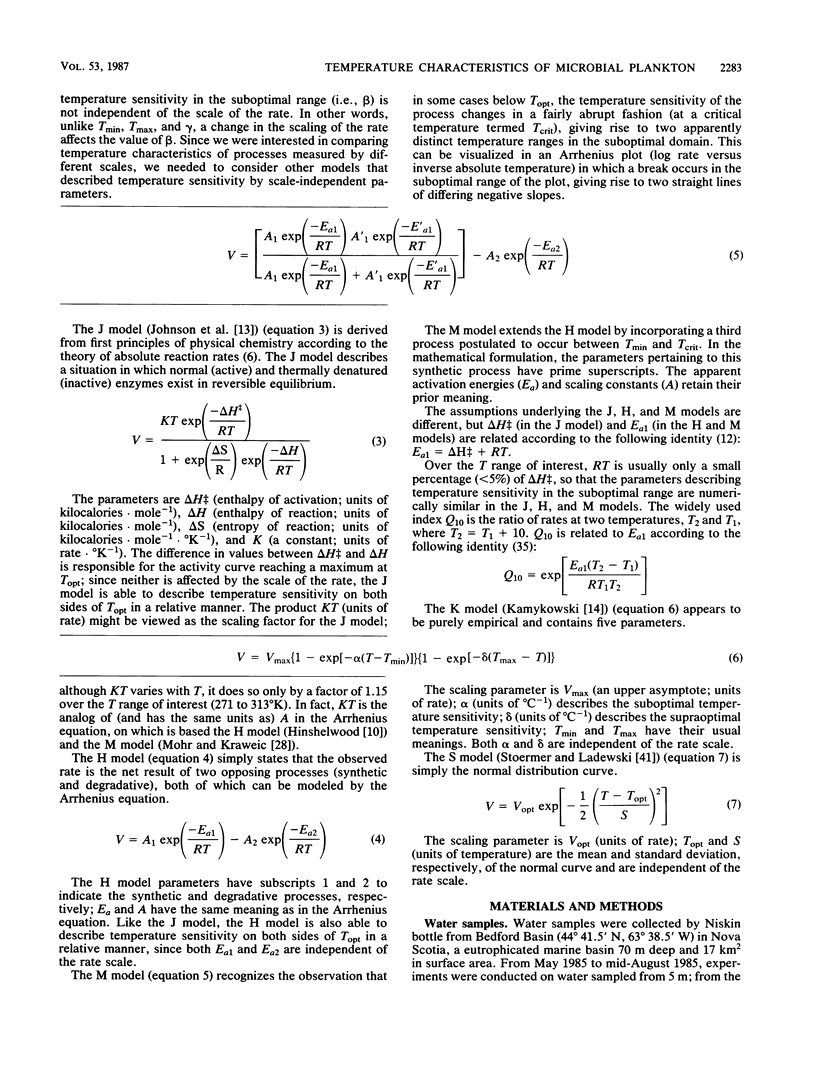
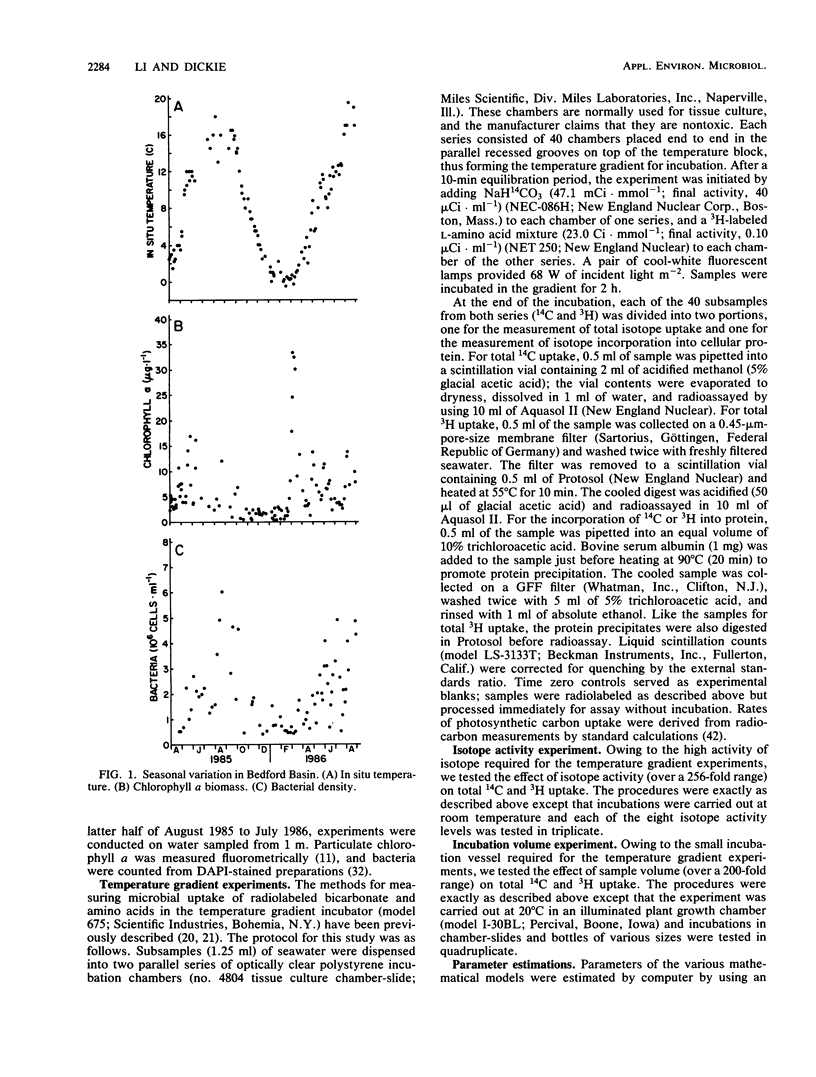
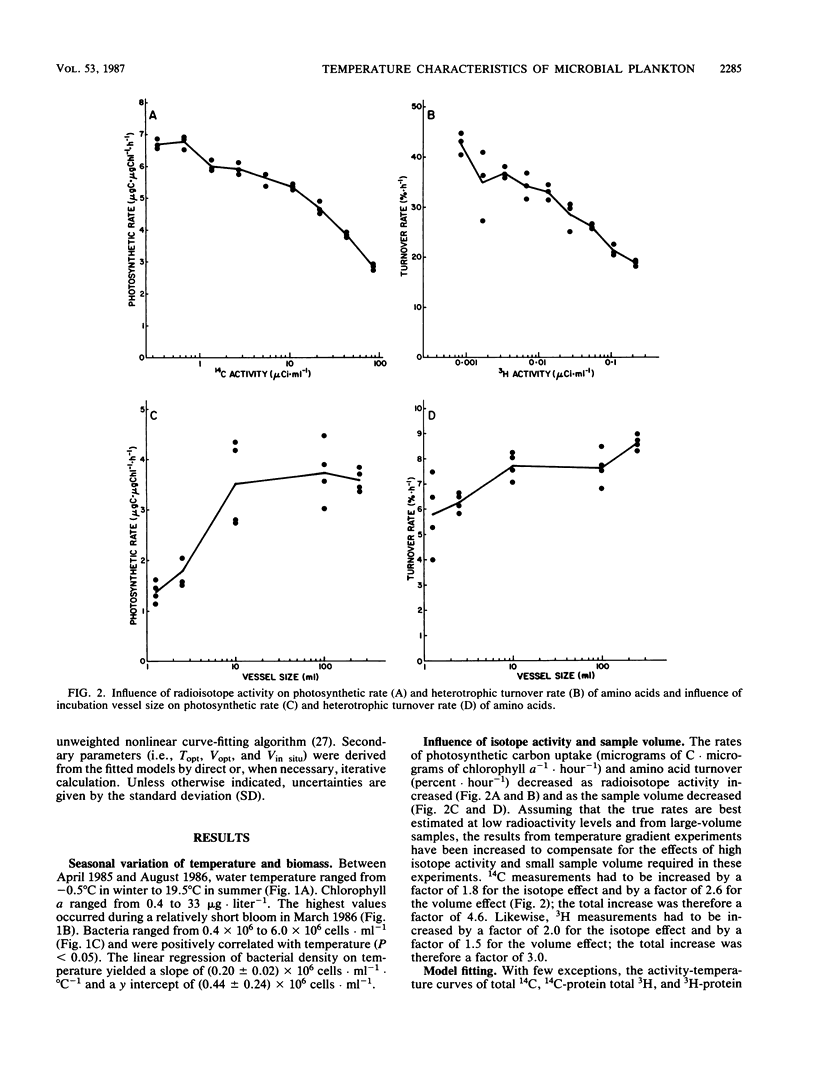
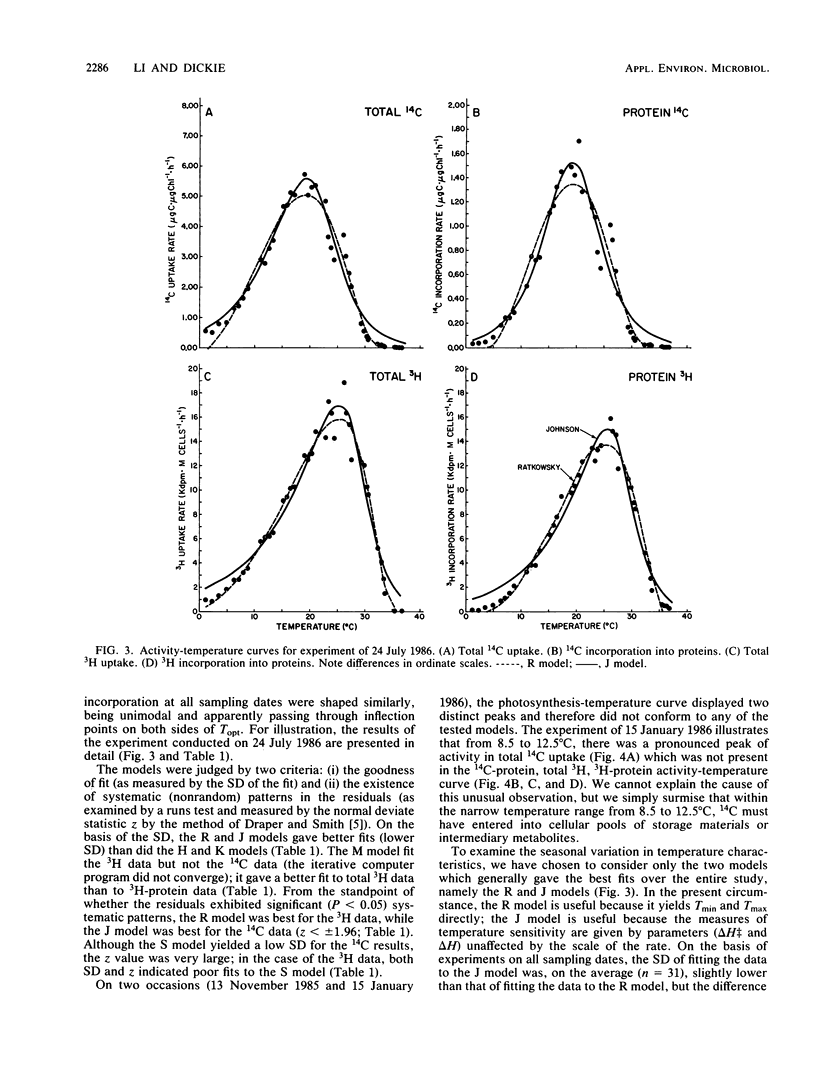
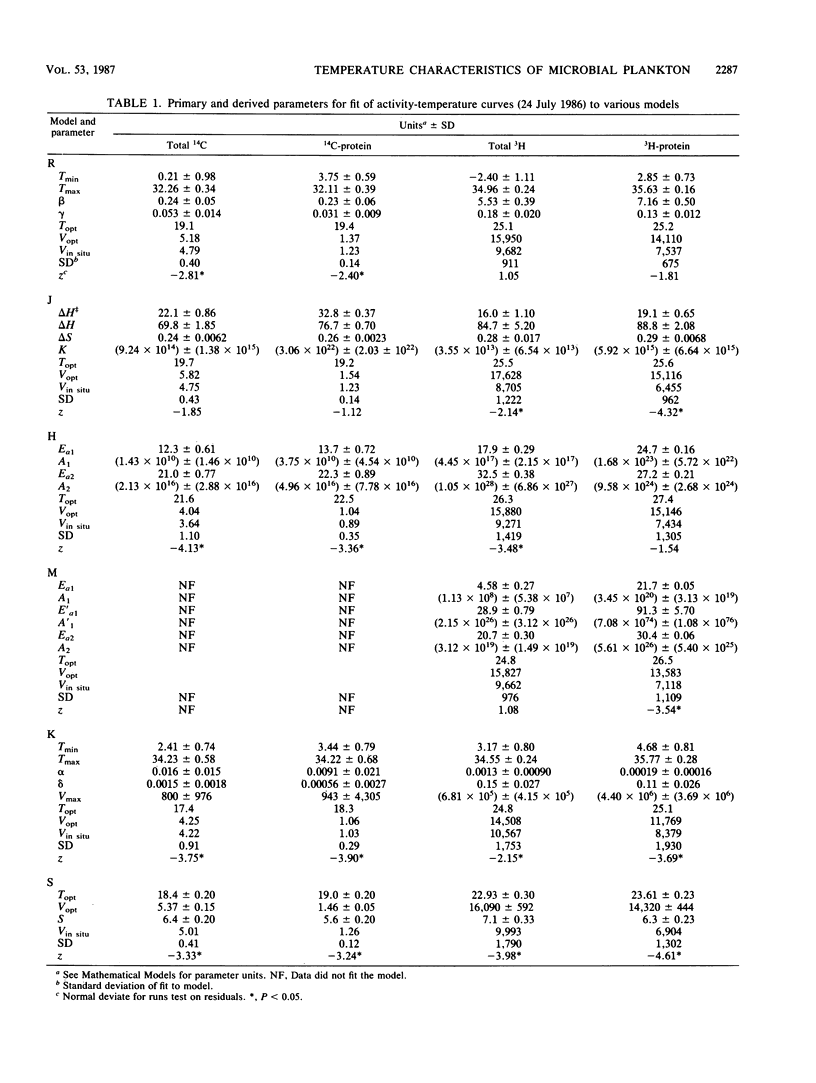
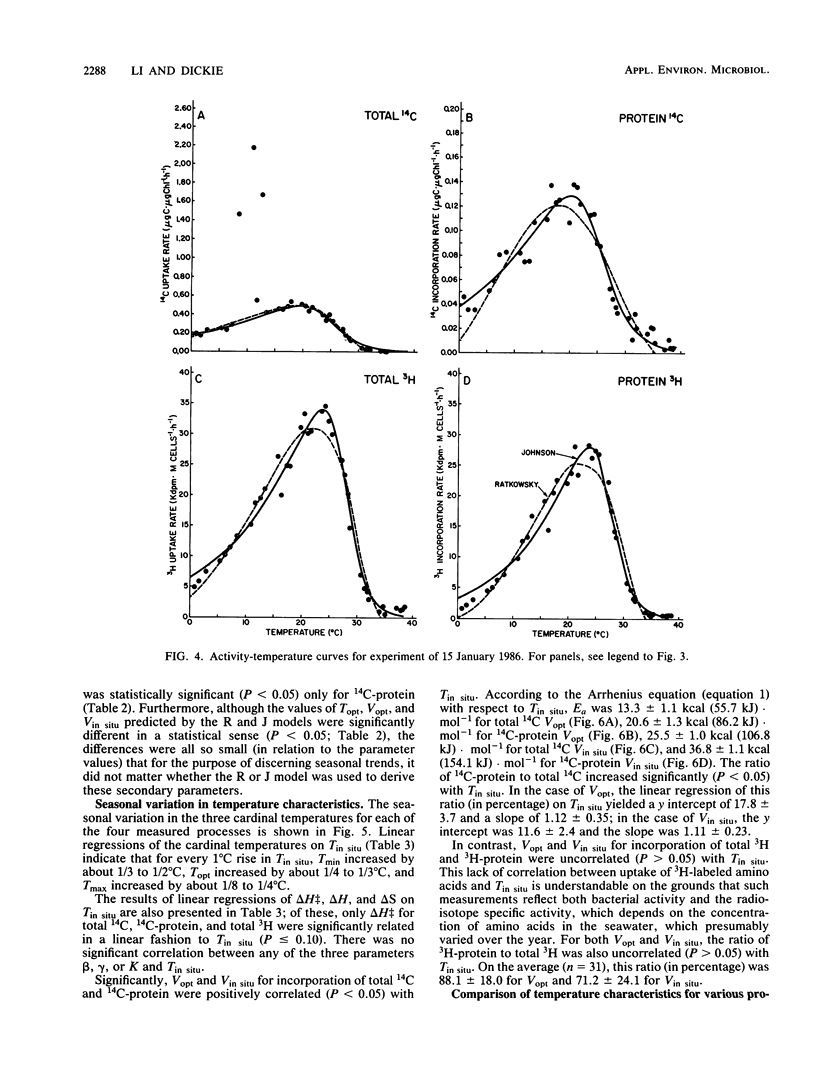
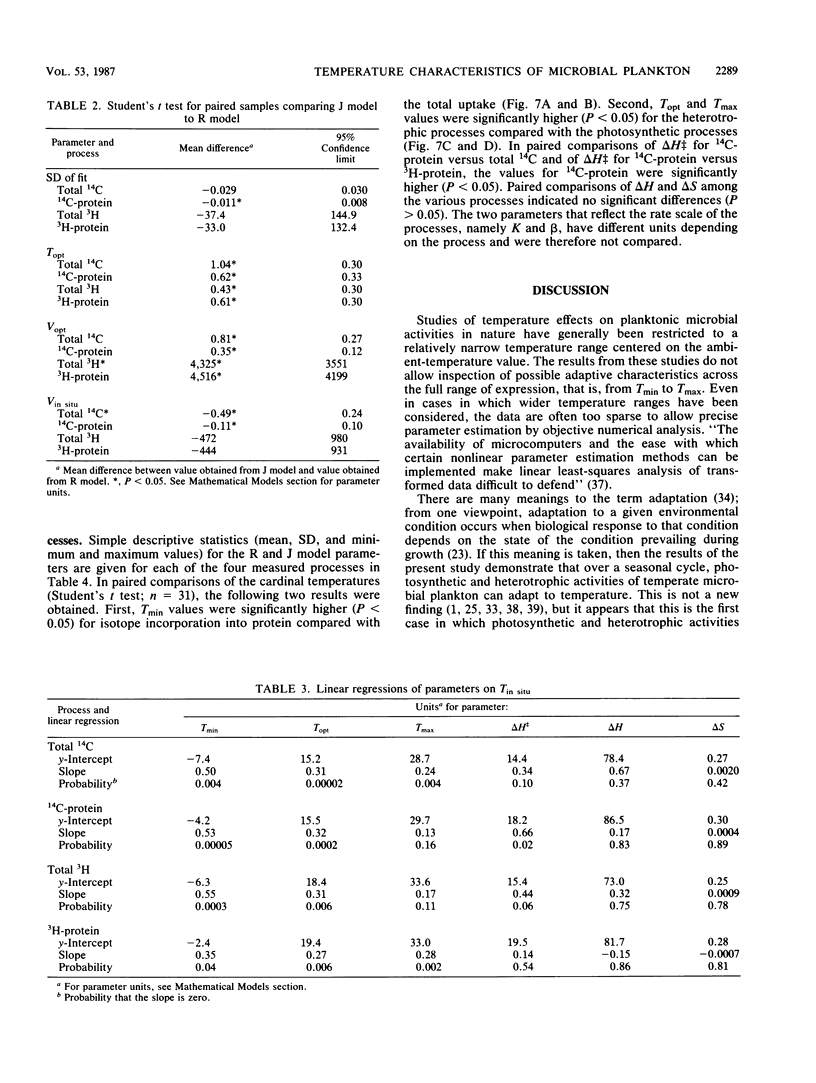
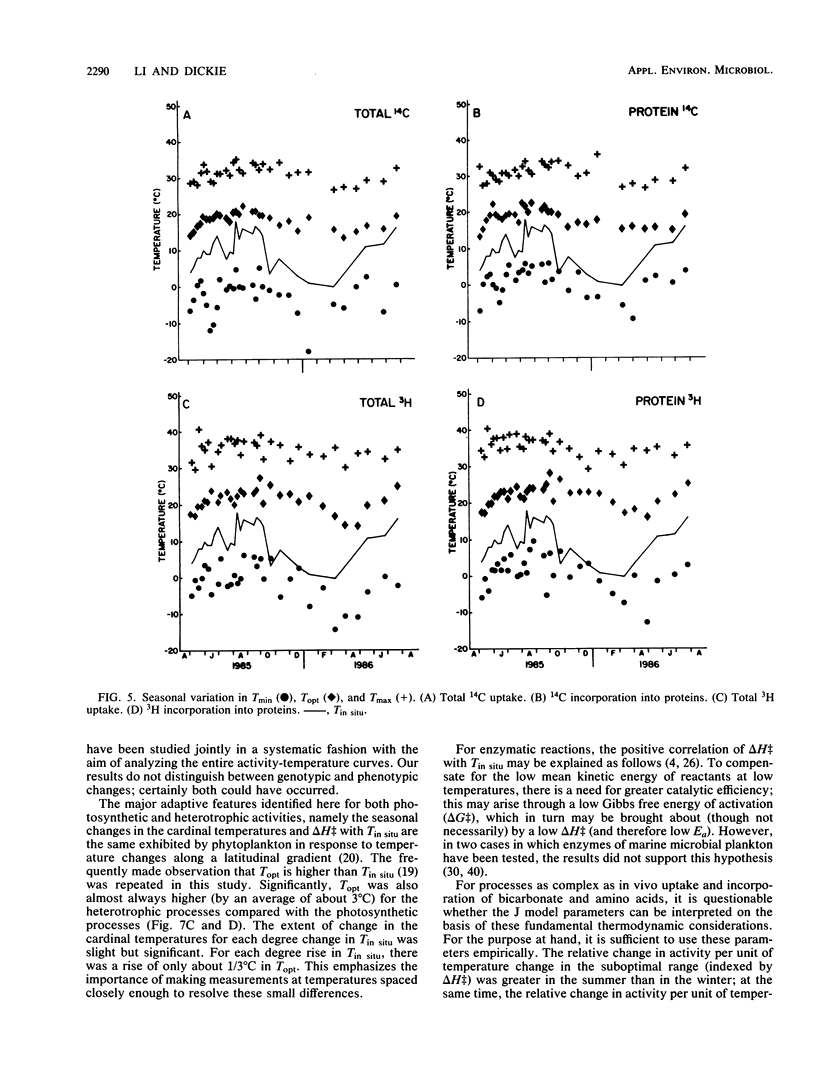
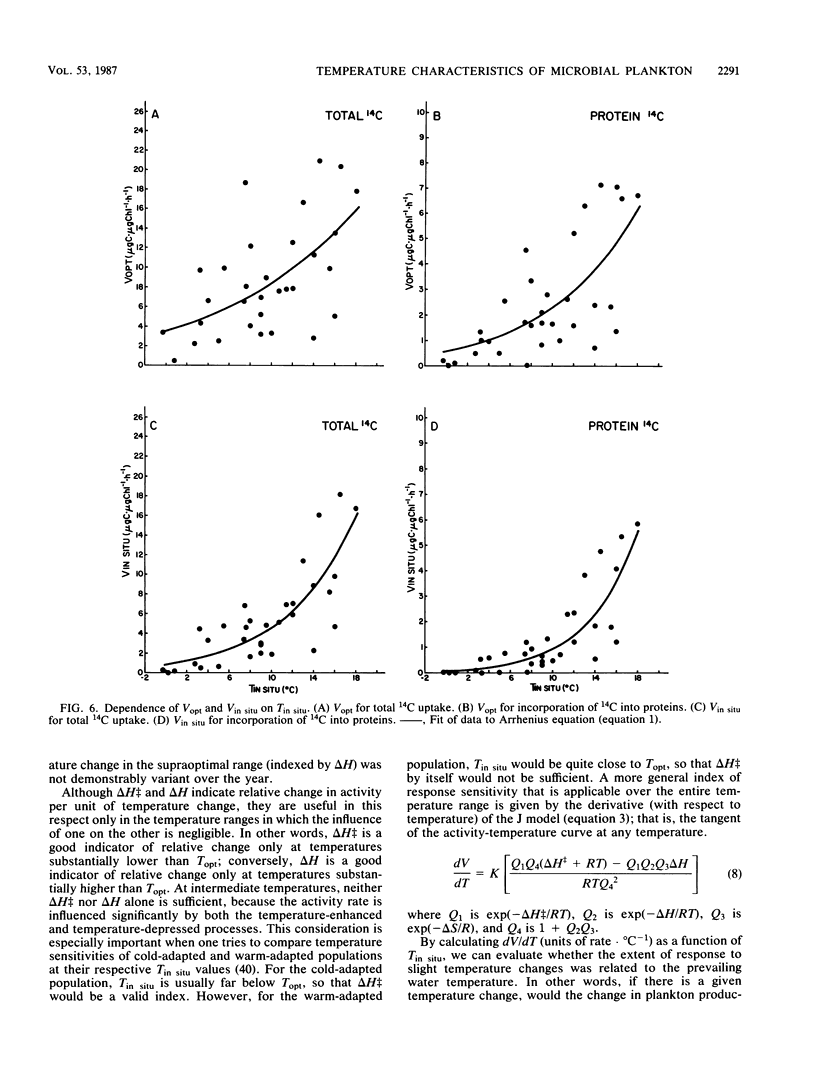
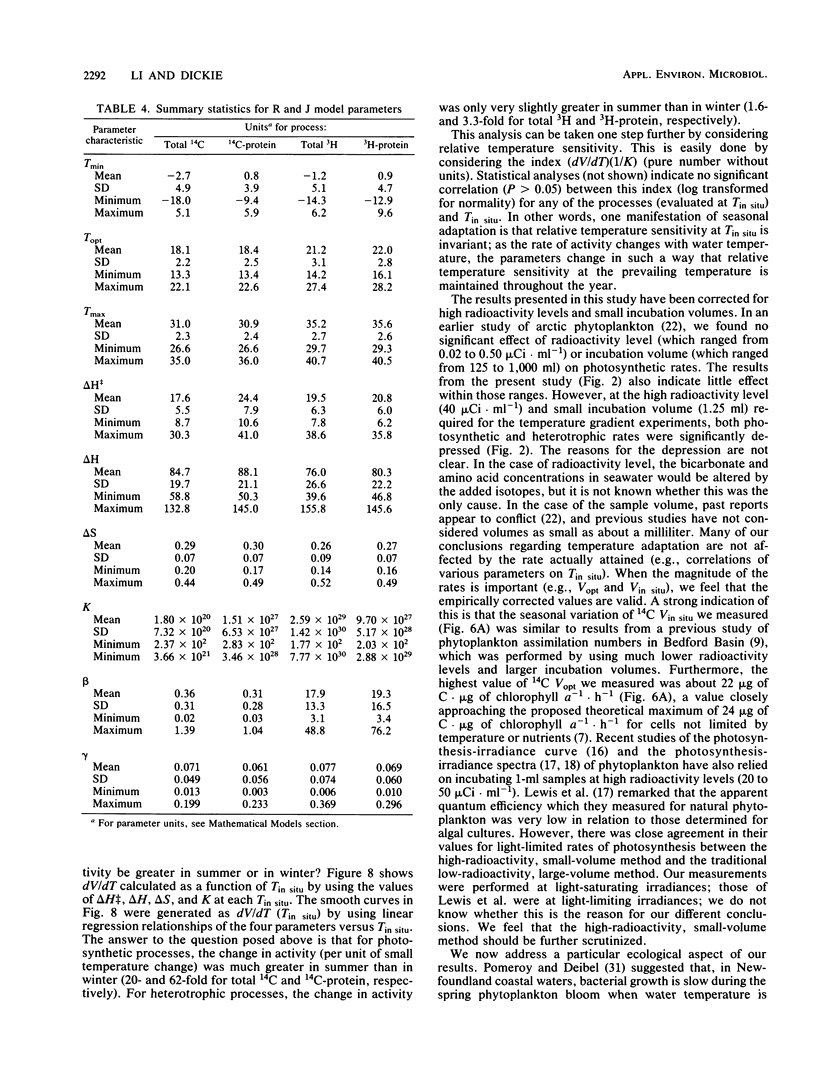
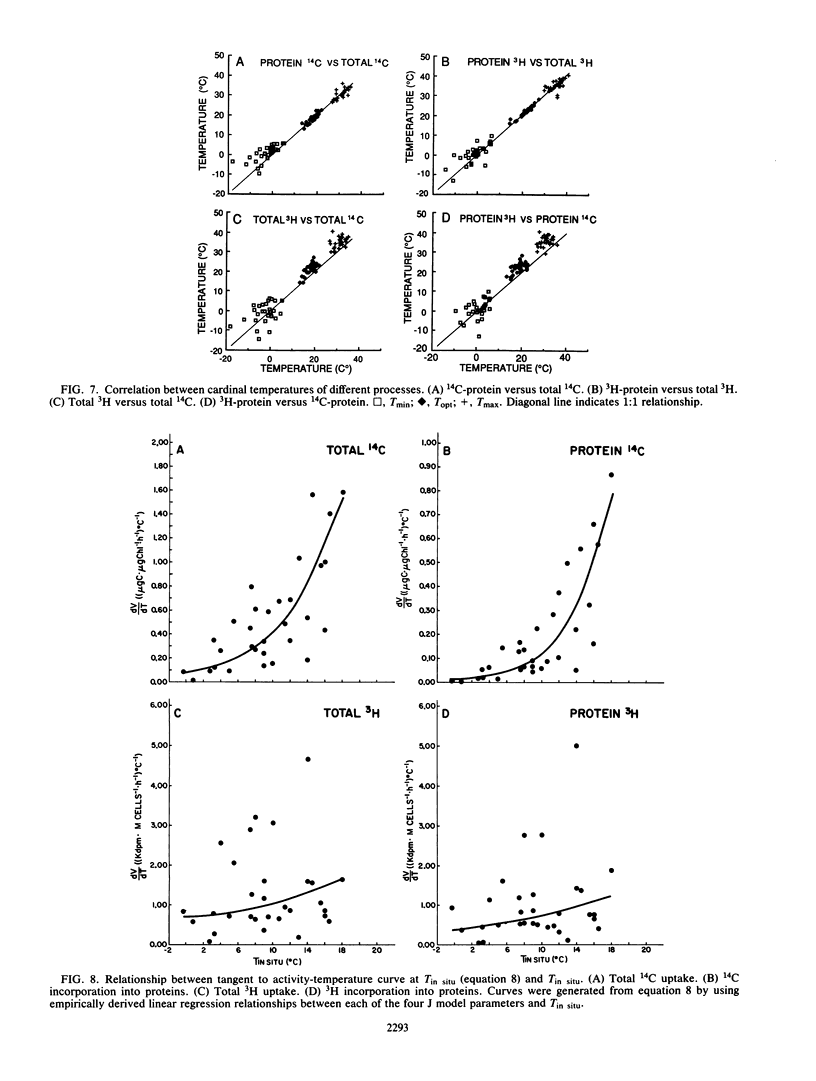
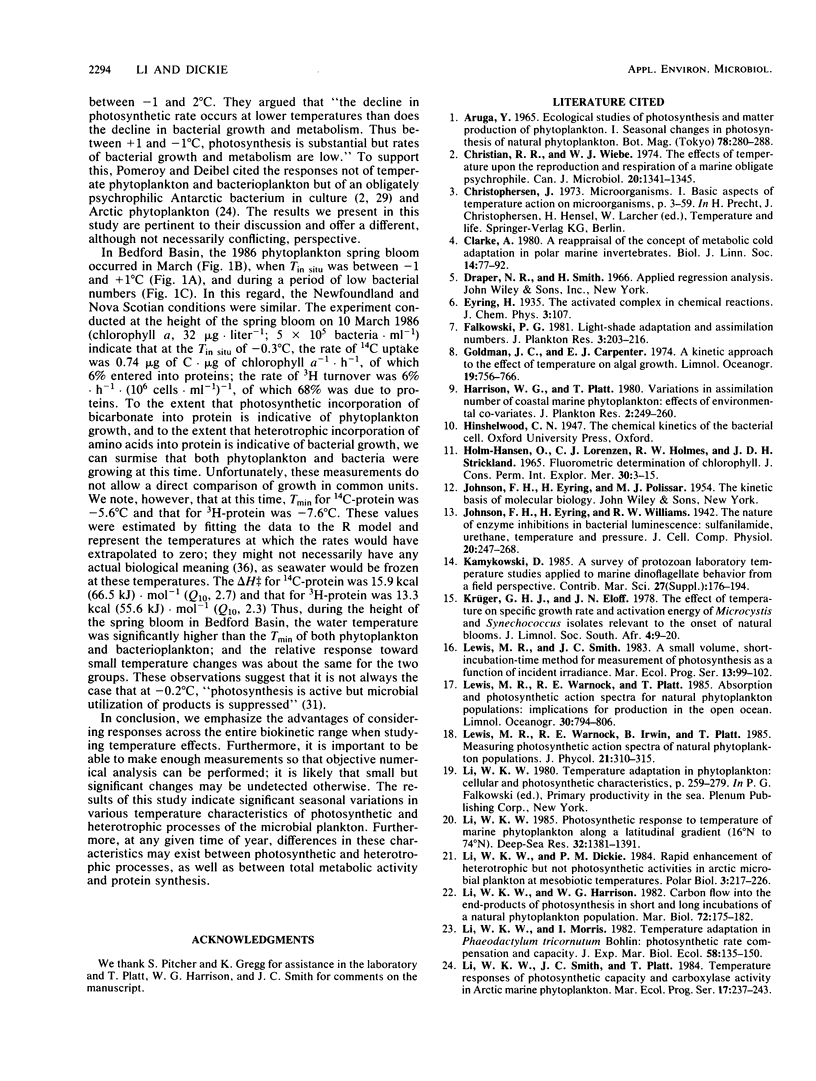
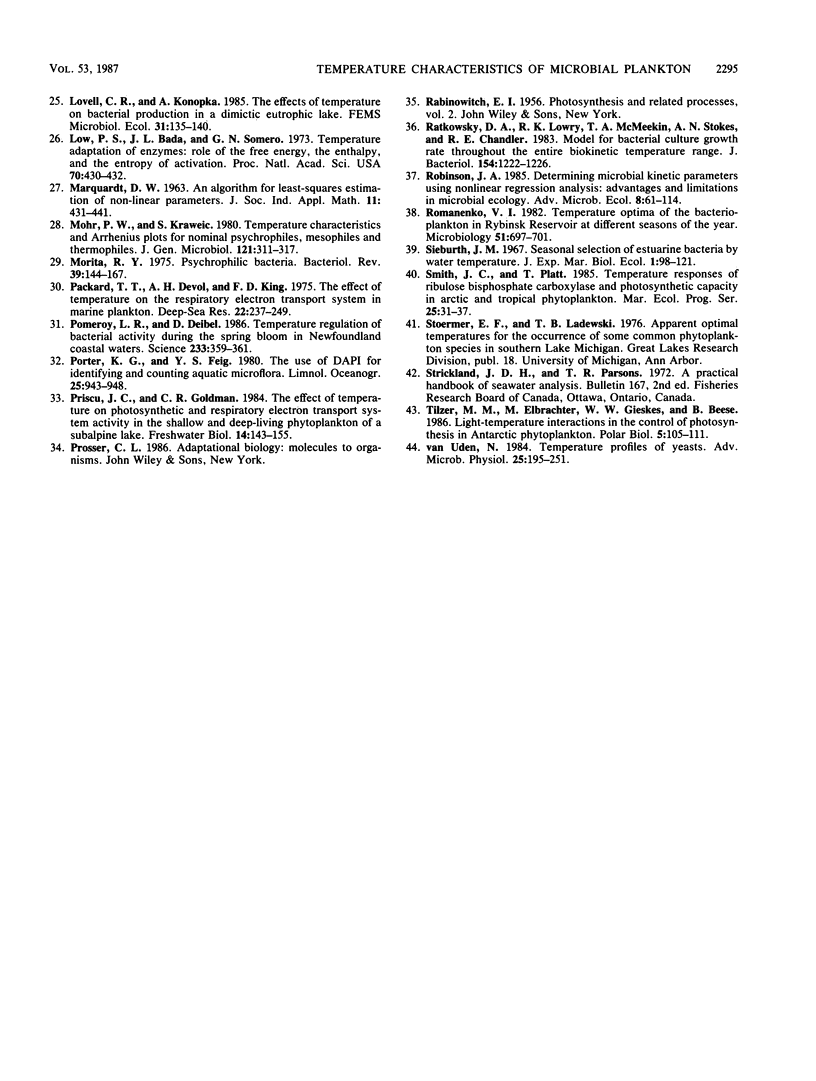
Selected References
These references are in PubMed. This may not be the complete list of references from this article.
- Low P. S., Bada J. L., Somero G. N. Temperature adaptation of enzymes: roles of the free energy, the enthalpy, and the entropy of activation. Proc Natl Acad Sci U S A. 1973 Feb;70(2):430–432. doi: 10.1073/pnas.70.2.430. [DOI] [PMC free article] [PubMed] [Google Scholar]
- Mohr P. W., Krawiec S. Temperature characteristics and Arrhenius plots for nominal psychrophiles, mesophiles and thermophiles. J Gen Microbiol. 1980 Dec;121(2):311–317. doi: 10.1099/00221287-121-2-311. [DOI] [PubMed] [Google Scholar]
- Morita R. Y. Psychrophilic bacteria. Bacteriol Rev. 1975 Jun;39(2):144–167. doi: 10.1128/br.39.2.144-167.1975. [DOI] [PMC free article] [PubMed] [Google Scholar]
- Pomeroy L. R., Deibel D. Temperature regulation of bacterial activity during the spring bloom in newfoundland coastal waters. Science. 1986 Jul 18;233(4761):359–361. doi: 10.1126/science.233.4761.359. [DOI] [PubMed] [Google Scholar]
- Ratkowsky D. A., Lowry R. K., McMeekin T. A., Stokes A. N., Chandler R. E. Model for bacterial culture growth rate throughout the entire biokinetic temperature range. J Bacteriol. 1983 Jun;154(3):1222–1226. doi: 10.1128/jb.154.3.1222-1226.1983. [DOI] [PMC free article] [PubMed] [Google Scholar]
- van Uden N. Temperature profiles of yeasts. Adv Microb Physiol. 1984;25:195–251. doi: 10.1016/s0065-2911(08)60293-3. [DOI] [PubMed] [Google Scholar]


